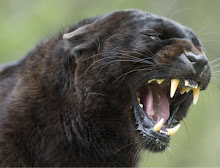
With some exceptions, you're not going to find many generation X'ers collecting metal lunch boxes. This new entry to the collectible market burst on the scene in the mid l980's. Its popularity is partially due to the fact that all production of metal lunch boxes stopped abruptly in 1986, and partly to the fact that individuals who carried their lunches to school in these containers the 1950's, 60's and 70's were only then old enough to become nostalgic about them.
Metal lunch boxes have a peculiar history.
The lunch box that launched a three-decade industry featured a picture of TV cowboy Hopalong Cassidy, and allegedly appeared in late l949. Produced by Aladdin, one of the giants of lunch box manufacture, its popularity was so great with school children in 1950 that it inspired Aladdin to move into other TV hero boxes, and spawned a host of competitors.
It was not, however, the very "first" lunchbox. That kudo goes to Geuder, Paeschke and Frey, who, between 1935 and 1937, created the Mickey Mouse oval kit lunch box. This lunch box is extremely rare today, and yet is not as valuable as some of the boxes that came after it.
So why did metal lunch boxes take the U.S. by storm in l950? The moment is an interesting one in history of American popular culture. During World War II, the production of many consumer items was diverted to the war effort. Still recovering from the Depression, and consumed with the impact of World War II on their lives, Americans scrimped and saved, put in victory gardens, and used the radio as their major source of entertainment and news. It was an extremely no-frills period.
Still, children went to school and took their lunches with them. There certainly were lunch boxes prior to l949. Retired University of Illinois Professor J.W. Courtier, himself an expert on Aladdin collectibles, reports that he took his lunch to school in the forties in a workman's lunch box. "My dad was a school teacher and that's what he used to transport his lunch to school. So I wanted one like his."
Several factors together initiated the lunch box movement: the robust production of babies by returning veterans and their wives, the new "family centered attitude" promoted by government and industry alike, and the infant television industry. Growing numbers of television viewers enjoyed TV characters from Hopalong Cassidy to Roy Rogers and Davie Crockett, and these sparked a wave of consumer items directed at children.
From Davie Crockett hats to Roy Rogers's guns and clothing, American children wanted to identify with their TV heroes and American manufacturers were more than happy to oblige them. To the sages on Madison Avenue, it became apparent that children greatly identified with the icons of certain television shows and this identification could be turned to the purchase of objects associated with those shows, which in turn reinforced the popularity of the shows, themselves.
No one predicted that lunch boxes would be the ideal vehicle for this kind of advertising. Aladdin began with one lunch box, licensing the right to portray Hopalong Cassidy and hiring artist Robert O. Burton to create the image. Demand was overwhelming and Aladdin turned to other producers of TV fare, Disney productions in particular, to license images for their lunch boxes.
Other companies quickly got into the market. It is interesting that although millions of lunch boxes were sold annually, not that many models appeared on the market. According to Allan Woodall and Sean Brickell, authors of the Illustrated Encyclopedia of Metal Lunch Boxes, manufacturers created only 450 different models in the thirty-six years of the industry's heyday.
Twelve companies dominated the market. These include: Aladdin, American Can, Cheinco, Geuder, Paesche, and Frey, General Steel Ware, Heekin Can, King Seeley Thermos (America Thermos), Ohio Art, Okay Industries, Omni Graphics, and Owens Illinois Can Company.
Every year, as new television shows were introduced, new lunch boxes came on the market.
Every year, as new television shows were introduced, new lunch boxes came on the market.
Children even dented or destroyed last the previous year's lunch box in order to get a new one for the start of a new school year. And television was by no means the only source of inspiration. Food products such as Fritos, movie stars, rock bands, comic book characters, sports teams and individual players, other toys such as dolls and action heroes, computer games, astronauts, even popular books (e.g. Jonathan Livingston Seagull) had their characters depicted on lunch boxes and thermoses. Some boxes had no recognizable characters and were simply decorative. One of the definitive l60' lunch boxes, for example, is Aladdin's psychedelic red and yellow swirled domed lunch box.
It all came to a sudden end. Metal lunch boxes and their accompanying thermoses are hard little suckers and over the years children apparently used them for more than storing their lunches. When fights broke out in school lunchrooms across the country, lunch boxes became the weapon of choice. Mothers whose kids returned home with large lumps and welts began to complain, and a group of mothers in Florida in the 1970s went so far as to complain to the state legislature.
Florida was the first state to ban metal lunch boxes and many other states followed suit. By l986, no manufacturer was using metal anymore. Plastic versions could support the same TV and product logos, were probably better protectors of food, and could not be considered dangerous under normal conditions.
But wait, has it all ended really? Lunch Box Bonanza News, a website devoted to lunch boxes and their aficionados or "boxers" as they are affectionately known, reports that Thermos is again releasing metal lunch boxes. In 1998, they released Small Soldiers, Hot wheels, and Godzilla. In 1999, Thermos produced three more: Superman, Hot Wheels "Twin Mill" and a Barbie lunchbox. Perhaps a new wave of lunch boxes mania is being born with the millennium.


No comments:
Post a Comment